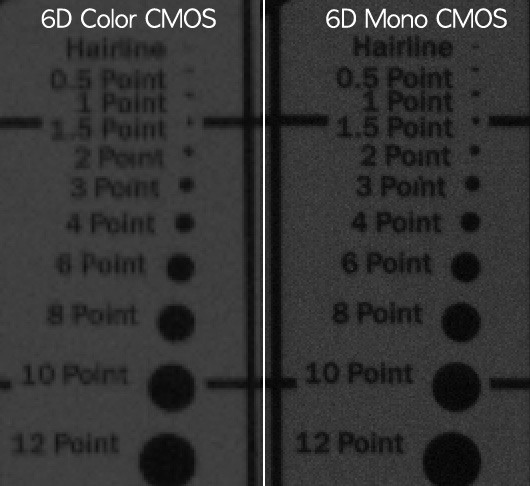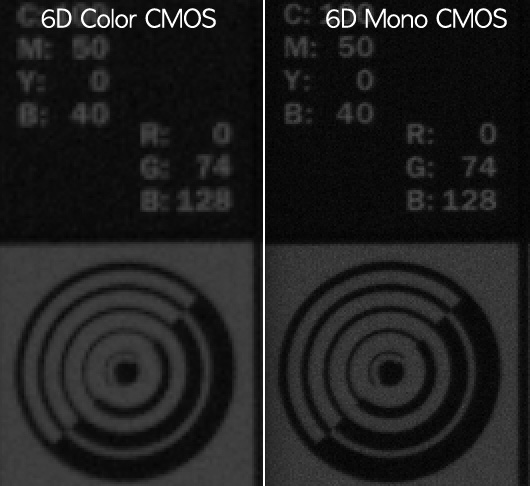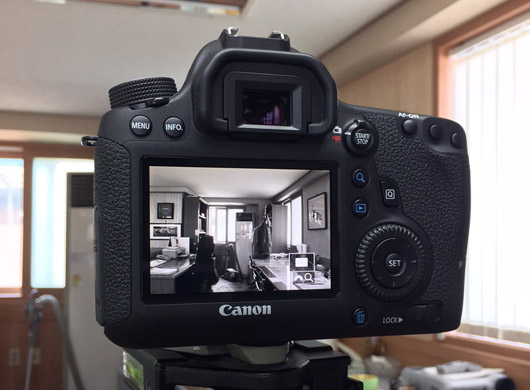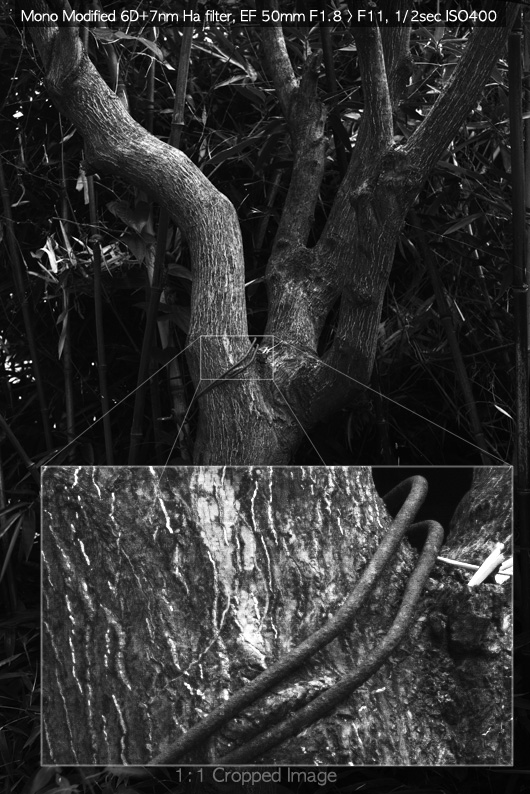Monochrome Camera
WHAT IS A ‘DEBAYERED CAMERA’ ?
To convert the color image sensor of a generic digital camera to a monochrome sensor, we must remove the bayer filter layer(= Color Filter Array=CFA) on the image sensor. This is called “Debayering”.
Many enthusiastic amateurs worldwide have successfully managed to debayer their image sensors. Most of these have involved micro grinding or squeezing out the layer [ Micro lens+CFA] by using a hard wood chopstick.
We know that these debayering methods leave many small scratches on the image sensor and that quality control is impossible.
During the last 2 years we have tried many experiments to find a successful and reliable debayering solution.
These have included, micro grinding using nano polishing powder, squeezing using a bamboo chopstick, various organic solvents, etching, heating, polishing by CNC machine, microtome blade etc.
We designed unique tools for each trial and have achieved some good results. However the slightest errors during the process left scratches and the quality of the debayering dropped significantly.
However recently by the grace of God, we have discovered a new debayering process. This new method is safe and prevents micro scratches on the CMOS sensor.
We tested this new method with SONY, CANON & FUJI sensors and succeeded with them all. So now it is possible to control qualitatively the debayering process and we have decided to launch the monochrome DSLR’s.
WHAT ARE THE DISADVANTAGES OF A DEBAYERED CAMERA?
First we can no longer image directly in color. This is because we have removed the color filter array on the image sensor surface. As a result each pixel can only record the strength of light, it can no longer distinguish the color value.
Secondly there is some loss of light gathering due to the removal of the micro lenses from the pixels.
Thirdly, the halo and ghosting from bright light sources is increased when compared to un-debayered sensors.
The micro lenses gather the light and focus it to the photodiode, however these lenses are removed in the debayering process.
CFA is a Red-Green-Green-Blue patterned array covering the sensor surface. When we remove this layer, the light transmittance increases compared to the un-debayered sensor. Therefore this is a plus (+) factor.
However the loss of the micro lens layer on the CFA decreases the sensor efficiency and so this is therefore a minus (-) factor.
So as a result of debayering we have both a (+) and a (-) at the same time.
After removal of the the CFA, the micro wiring on the wafer surface is exposed and reflects more light and can produce halo and ghost images from a bright light source.
This phenomenon is already apparent in most undebayered cameras but the intensity is not too serious. In debayered cameras this tendency is stronger and clearer.
WHAT ARE THE DISADVANTAGE OF A DEBAYERED CAMERA?
The bayer filter(= CFA) concept of a color image sensor is an excellent concept to record color, however it means the sensor’s original capacity is seriously degraded.
The transmittance of CFA is very low compared to a debayered sensor. The minimum color unit is 2 pixels x 2 pixels = 4 pixels. This is 1/4 ratio compared to a monochrome sensor (=1 pixel unit). This produces a lower resolution output image.
In addition the low pass filter on the sensor further decreases the resolution.
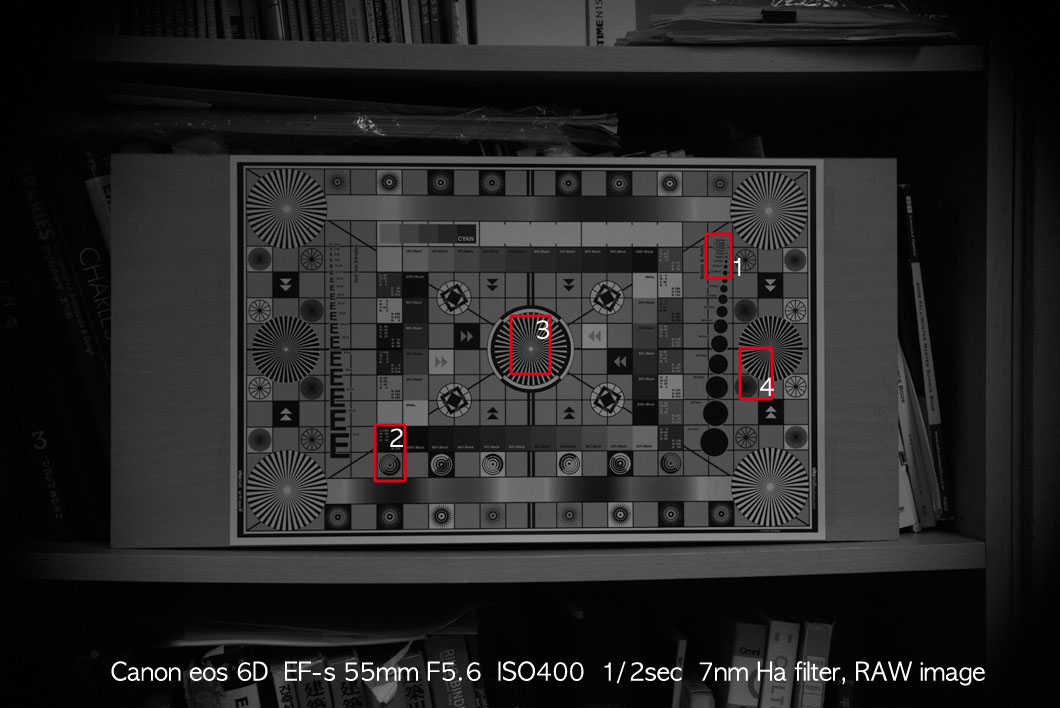
After the monochrome modification the resolution increases a minimum of 2 times or more. This corresponds to a 4 times pixel count increase and we achieve an ultra high image resolution.
If we convert a Canon EOD 6D (20 MegaPixels) to a mono 6D, we achieve a resolution of 80 MegaPixels.
Above test shot was taken by [ color Astro 6D + Ha 7nm filter ] and [ mono Astro 6D + Ha 7nm filter ] at the same ISO and exposure condition. RAW files were converted by [ RawDigger ] software.
From the comparison images we can see the difference between the color sensor and the debayered sensor.
WHY MODIFY COMMON DSLR CAMERAS?
B/W CCD cameras using Kodak sensors are used by many amateur astronomers worldwide. However the user interface of these cameras is complicated and they are expensive.
By contrast common DSLRs have an easier user interface, they use newly developed sensors of very high quality and the prices are affordable.
WHAT KIND OF PHOTOGRAPHY CAN WE DO USING A DEBAYERED CAMERA?
1. Astro imaging.
If you choose an Astro 6D, CDS-5D or a CDS-600DII converted to monochrome, you can use the drop-in filter holder. Various 2” (48mm thread) astronomical filters can easily be installed and swopped as required.
With classical LRGB image processing you can produce fine detailed full color galaxy or nebula shots.
Ha, H-Beta ,SII, OIII etc filters will allow you to produce your own false color narrowband images in the same way as a B/W CCD camera does.
2 Generic photography.
Using the monochrome sensor, the artist can deliver his deep inspiration from his subjects.
In this case the various band pass filters are very helpful. Because each R,G,B filter transmission width is about 1/3 of visual width (400-700nm).
If you use these filters with your camera lens, chromatic aberration will be significantly reduced.
Because the B/W sensor gives you 4 times the resolution, the use of a band pass filter + debayered monochrome camera will enable the photographer to produce high resolution landscape or portrait images.
Full Size Image ……..Big File >>>
3.IR or UV photography
Former low pass filter modified IR cameras mainly record the data to the R pixels, which are only 1/4 of the total pixel count.
However in the case of debayered mono cameras there is no R-G-G-B bayer filter on the image sensor and you achieve 4/4 pixels recording of the IR rays. If you use an R72 filter on one of these cameras you will be able to get high quality IR photos.
Generic DSLR’s cannot record UV light because of the lenses, low pass filter, sensor cover glass and Bayer filter, which all block the UV transmission.
However in the debayered sensor these are all totally removed and there is only an AR coated cover glass that passes UV-Visible Ray_IR. Therefore if you use a lens that is designed for UV photography and UV pass filter, (Hoya U-360, x-nite 330 etc ) you will be able to take UV photos.










